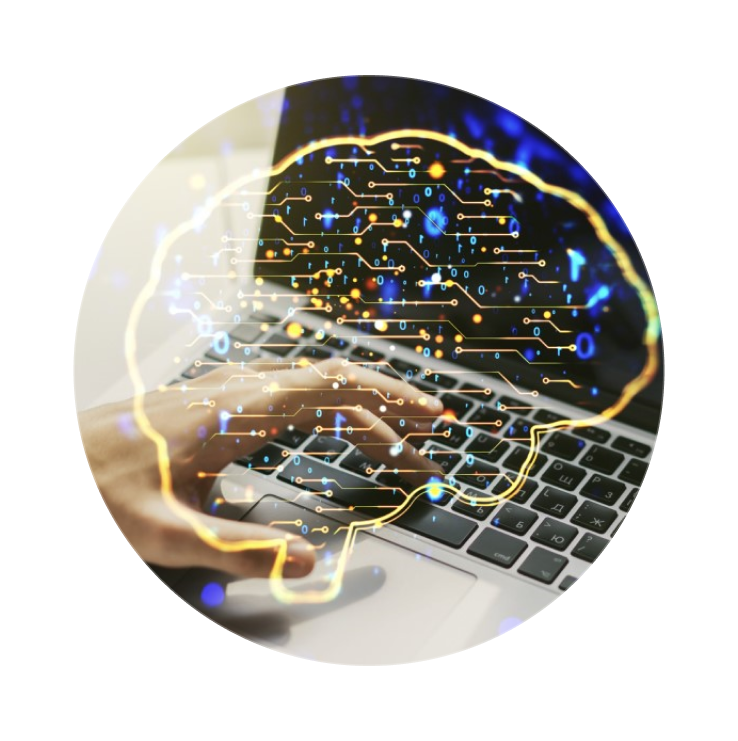Machine learning (ML) has become one of the most sought-after skills in today’s tech landscape. With its applications in fields like healthcare, finance, marketing, and autonomous driving, it’s no surprise that many people are eager to dive into this fascinating field. But one common question arises among beginners: Is machine learning difficult to learn?
The answer depends on several factors, including your background, learning approach, and the complexity of the ML concepts you’re tackling. Let’s break down the aspects that determine how difficult machine learning is to learn and offer some tips to make the process smoother.
Factors That Influence the Difficulty of Learning Machine Learning
- Prior Knowledge and Experience
- Mathematics and Statistics: Machine learning relies heavily on mathematics, particularly linear algebra, calculus, and statistics. If you have a strong foundation in these subjects, you’ll find the mathematical concepts in ML more approachable. However, if you’re new to these topics, it might take a little extra effort to grasp the fundamentals.
- Programming Skills: Python is the most commonly used language for machine learning, thanks to its simplicity and a vast ecosystem of ML libraries. If you’re already comfortable with Python, you’ll have a head start. However, if you’re new to programming, you might need to spend some time learning the basics of coding before diving into ML.
- Understanding Core Concepts
- Supervised vs. Unsupervised Learning: The basic types of machine learning—supervised, unsupervised, and reinforcement learning—are relatively easy to understand. However, grasping the nuances and knowing when to apply each type requires a deeper understanding.
- Algorithms: There are many different machine learning algorithms (e.g., linear regression, decision trees, support vector machines, neural networks), and each has its own strengths, weaknesses, and applications. Understanding how these algorithms work under the hood can be challenging, but it’s crucial to becoming proficient in ML.
- Real-World Applications
- Data Preparation: One of the most challenging parts of machine learning is preparing data for analysis. Cleaning, transforming, and selecting the right features can take up a significant portion of your time and effort. Understanding how to work with large datasets and making sense of raw data can be overwhelming for beginners.
- Model Evaluation: After building a model, evaluating its performance and fine-tuning it for better results is an iterative process that requires patience and practice. Learning how to measure accuracy, precision, recall, and other metrics can be tricky.
- Learning Resources and Tools
- Online Courses and Tutorials: Fortunately, there are plenty of high-quality resources available to help you learn machine learning. Platforms like Coursera, edX, and Udacity offer courses from top universities and industry leaders, making learning accessible. Additionally, ML frameworks like TensorFlow, PyTorch, and Scikit-learn provide powerful tools to implement algorithms easily.
- Community Support: The machine learning community is vast and supportive. Whether you’re stuck on a concept or need help with a coding issue, online forums like Stack Overflow, GitHub, and specialized machine learning communities are valuable resources.
Why Machine Learning Might Seem Difficult
- Complexity of Algorithms: Some machine learning algorithms, especially deep learning models, are quite complex. For example, neural networks and deep learning involve multi-layered architectures and require an understanding of backpropagation, gradient descent, and activation functions. These concepts can be challenging for those new to machine learning or artificial intelligence.
- Rapid Advancements in the Field: Machine learning is a fast-evolving field, with new techniques, research papers, and tools emerging regularly. Keeping up with the latest advancements can feel overwhelming, especially for beginners. However, it’s important to understand that mastering the basics is key before diving into more advanced topics.
- Practical Experience: Unlike theoretical subjects, machine learning often requires hands-on practice. Building and deploying real-world ML models involves experimentation, debugging, and iterative improvement. This practical aspect can make the learning process feel slow and sometimes frustrating, but it’s an essential part of becoming proficient.
Is Machine Learning Easy or Difficult?
The difficulty of learning machine learning ultimately depends on your approach, persistence, and willingness to learn. For some, the initial learning curve may seem steep, especially when dealing with abstract concepts like neural networks or the mathematics behind algorithms. However, with the right mindset and resources, machine learning becomes much more approachable.
Tips to Make Learning Machine Learning Easier
- Start with the Basics: Begin by understanding basic concepts like supervised learning, classification, and regression. Once you’re comfortable with these, you can move on to more complex topics like deep learning and reinforcement learning.
- Learn the Math: If you find the math challenging, take time to review the fundamentals of linear algebra, calculus, and statistics. Many online resources and books break down these topics in a way that’s relevant to machine learning.
- Practice Coding: Practice coding algorithms from scratch to understand how they work. Start with simpler algorithms like linear regression before tackling more complex ones like neural networks.
- Use Libraries and Frameworks: Leverage powerful libraries like Scikit-learn for classical ML algorithms and TensorFlow or PyTorch for deep learning. These libraries provide pre-built models and tools, allowing you to focus more on understanding the concepts rather than writing every line of code from scratch.
- Join the Community: Don’t hesitate to ask questions and engage with the ML community. Participating in online forums, attending meetups, or joining study groups can provide valuable insights and support.
- Build Projects: The best way to solidify your learning is by building projects. Try applying ML algorithms to real-world datasets, such as predicting house prices or classifying images. This hands-on experience will deepen your understanding.
Conclusion
Is machine learning difficult to learn? The answer depends on your background and approach. While it may seem daunting at first, with the right mindset, resources, and persistence, anyone can learn machine learning. Start with the basics, practice consistently, and don’t be afraid to tackle more advanced topics as you progress. Remember, the journey to mastering machine learning is a marathon, not a sprint. Stay patient, keep learning, and enjoy the process!

